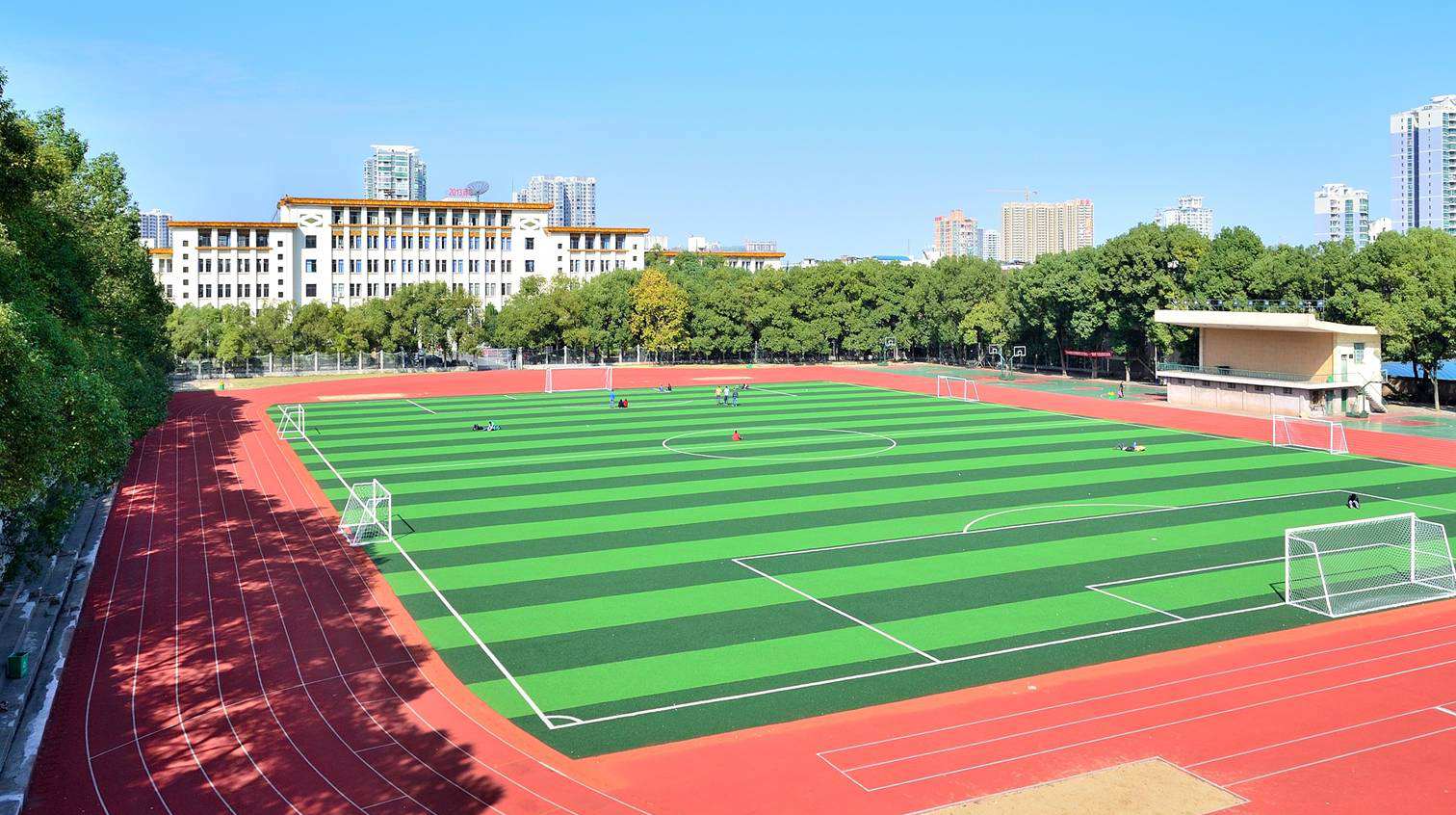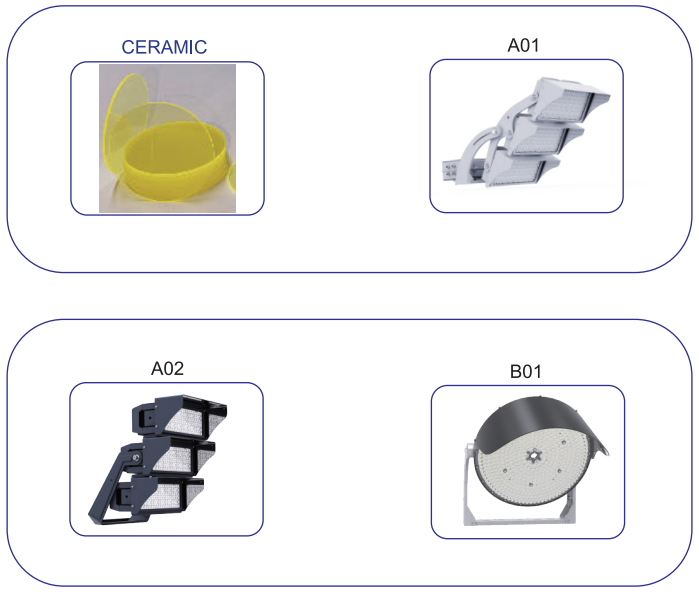LED Outdoor Sport Court Lighting Design & Standards
Best Outdoor Court Lights for Sports Field

Directory:
1. Standards for Outdoor Sport Court Lighting Design
2. Case of outdoor sport court Lighting Design for College
3. Installation, Operation, and Maintenance
4. Best Outdoor Court Lights for Sports Field
A modern outdoor sport court must not only feature an attractive architectural design and comprehensive sports facilities, but it also needs to provide a suitable lighting environment. This includes having consistent and adequate illumination, optimal light color, a sense of depth, and no glare. It's essential to ensure that the lighting enhances the viewing experience for spectators while also meeting the needs of referees, athletes, and the requirements of the events, as well as facilitating effective television broadcasts.
Effective lighting plays a crucial role in contemporary stadiums. When designing outdoor sport court lighting, three main factors should be taken into account:
The lighting must fulfill the visual needs of athletes during competitions, minimizing any negative impact on their performance.
It should cater to the visual comfort of the audience, reducing any discomfort caused by the lighting while they watch the event.
The lighting must meet the requirements for television broadcasts (in terms of color) to enhance broadcast quality.
Lighting is integral to both the competitive requirements of sports events and the audience's viewing experience. A outdoor sport court lacking adequate lighting facilities is considered incomplete and can significantly hinder its functionality.
1. Standards for Outdoor Sport Court Lighting Design
A standard outdoor track and field stadium is divided into the outfield, midfield, and infield. The boundary is defined by the runway, which serves as the midfield, typically consisting of 9 to 10 lanes, each measuring between 1.22 and 1.25 meters in width. The area within the runway is the infield, which includes the central court used for track and field events or football matches.
The primary focus of outdoor track and field lighting standards is on illumination and lighting quality. Lighting quality standards encompass factors such as glare, color temperature of the light source, color rendering index, light directionality, and energy efficiency requirements. These lighting quality standards are detailed in Table 1.
Table 1: Outdoor Sport Court Lighting quality standards

2. Case of outdoor sport court Lighting Design for College
Using a college outdoor sport court as a reference, the lighting control requirements include amateur training, amateur competitions, and large events. The outdoor sport court measures 183 meters in length, 100 meters in width, and covers a total area of 18,300 square meters. To achieve an even light distribution, the main light poles are designed to be 30 meters high, with each set of lights consisting of 40 units at 400 watts each. The auxiliary light poles are set at a height of 15 meters, with each set containing 8 units at 200 watts each.
The lights have a projection angle of 70 degrees, resulting in a total power output of 35,200 watts and a glare rating of approximately 30. This side lighting configuration offers improved glare management and enhanced vertical illumination when the light angle is set at 70 degrees relative to the court's longitudinal axis. Although a higher angle aids in reducing glare, it also leads to a decrease in the vertical illumination component.
The elevation angle of the flood light located near the sideline is defined by angle β. To maintain an appropriate balance between horizontal and vertical illumination, the β angle should not exceed 25°. If the flood lights at the edge of the stand ceiling do not meet this β requirement, they can be installed beneath the ceiling or alternative methods can be utilized. Two sets of flood lights are positioned along the court's side. When the β angle approaches 25°, the height of the light towers that achieve a 70° angle becomes comparable to a four-corner setup.
In practice, two towers on each side can also be effectively used. The flood lights are arranged in a nearly continuous manner, with light strips extending past the court's baseline to ensure adequate illumination at both ends and to provide vertical lighting for athletes near the sidelines. Increasing this angle helps reduce glare for athletes moving towards the baseline while simultaneously enhancing vertical illumination. The maximum allowable increase in angle is influenced by the ceiling height of the stands and any shadows on the court that obstruct the light from the lamps.
(1) Illumination standard
The lighting standards for this project align with Class III sports field requirements.
(2) Illumination uniformity
Given the large area of the sports field and the considerable distance involved, as well as the extensive movement range of the football, it is essential to achieve uniform light distribution on the ground. National standards dictate that the ratio of minimum to maximum horizontal illumination should be no less than 0.5. and the ratio of minimum to maximum vertical illumination should be at least 0.4. Additionally, the ratio of vertical to horizontal illumination must not fall below 0.25. and the vertical illumination in the audience seating area should be at least 0.25 of that on the field.
(3) Glare limitation
Effective sports lighting must not only provide adequate horizontal and vertical illumination but also minimize glare to create a bright and comfortable environment. Glare significantly impacts lighting quality. Addressing glare involves considerations such as the installation height of the lights, their projection direction, the athletes' movement paths, and the audience's viewing angles. Consequently, the elevation angle of the lowest visible part of the lamp in the center of the sports field should be above 30°. There are established glare control standards both domestically and internationally; typically, the glare index (CF) for large competition venues should not exceed 50. while the glare index (GF) for practice venues should not surpass 60.
(4) Color Temperature and Rendering
The color temperature and color rendering of the light source are crucial factors in the lighting design for sports venues, as they determine the light's suitability for various applications. The International Commission on Illumination specifies that the color temperature should range from 3,000 to 6,000 K. Typically, games occur from afternoon until dusk, during which the sky's color temperature is between 4.000 and 6.000 K. Thus, a color temperature above 4,000 K is necessary.
A higher color rendering index (CRI) indicates better color accuracy, which enhances the color reproduction for television broadcasts. Consequently, there are specific CRI requirements: for international competitions and events requiring TV broadcasts, the CRI should be between 80 and 90; for domestic and international competitions and training venues, it should be between 60 and 80; and for training venues, it should be between 40 and 60. According to standards, outdoor sport court lighting should have a CRI of at least 80.
(5) Light Source Lamps
The artificial lighting in sports facilities typically utilizes halogen tungsten lamps, metal halide lamps, LED lamps, high-pressure mercury lamps, and sodium lamps. Among these, LED lamps are preferred due to their compact size, precise light beam control, high efficiency, excellent color rendering, long lifespan, and low operating costs.
Consequently, LED lamps are the top choice for outdoor sport court. Energy efficiency in lighting is also a crucial consideration in modern designs, necessitating the selection of light sources that offer high efficiency, superior color rendering, and longevity. After evaluating and comparing various lighting options suitable for outdoor sport courts, LED lamps were ultimately chosen.
(6) Light pole placement
The 30-meter light poles are positioned at the intersection of the field's center and the sideline at a 15° angle, as well as at the intersection of the longitudinal center of the field and the longitudinal sideline at a 5° angle. The 15-meter light poles are located on either side of the stands, parallel to them, serving as supplementary lighting.
(7) Light pole height
The height of the light pole significantly impacts the outdoor sport court's illumination and glare levels. To minimize glare, the light pole height is set between 22° and 25° based on the projection angle towards the field's center. This configuration has proven effective, as it reduces the number of light sources visible to athletes and spectators, thereby decreasing glare.
(8) Calculation outcomes
After determining the illumination levels, glare index, light pole location, and height, the number of lamps, along with the horizontal and vertical illumination requirements, are established using a point-by-point method. Figure 5 illustrates the schematic of this calculation method.
A total of 96 lamp sets are chosen for the venue, with 40 sets mounted on each 30m pole and 8 sets on each 15m pole. The average horizontal illumination is measured at 1.255 lx, vertical illumination at 1.298 lx, and the glare value is recorded at 30.
(9) Installation guidelines
To minimize glare, the positioning of the high pole lamps must ensure that the poles are angled 10° to 12° outside the bottom line and 5° to 8° outside the side line, resulting in a projection angle exceeding 25°.
The positioning of the lamp poles must not obstruct the audience's view. Typically, the height of light poles in outdoor sport courts exceeds 25 meters. If the lights are mounted on the canopy walkway, the walkway's height should be at least 30 meters.
(10) Illuminance Measurement
Choose a representative area or measure the entire venue. For venues with symmetrical lighting setups, measuring just 1/2 or 1/4 of the area is sufficient. The placement of measurement points for illuminance should follow the venue's specifications. Refer to Figure 8 for a schematic of the measuring point locations and Figure 9 for a grid map of the sports field measurement points.
(11) Glare Calculation
Glare significantly impacts lighting quality. According to CIE NO. 83 "Sports Venue Lighting for Color TV Systems," the maximum glare index (GR max) in the venue should be below 50. A lower glare rating indicates better glare control. When calculating illumination, the glare rating (GR) in various directions should be assessed, with GR < 50 being acceptable.
To limit glare, it is essential to carefully select, install, and arrange the lamps, as well as enhance the background illumination of the outdoor sport court.
3. Installation, Operation, and Maintenance
After setting up the adjustable flood lights, mark the projection positions for easier future maintenance. It is advisable not to alter the aiming point of the original flood lights during other sports events, such as throwing or track events, as resetting the aiming point can be time-consuming and costly. It is recommended to establish two separate lighting systems, each controlled according to its specific requirements.
4. Best Outdoor Court Lights for Sports Field

_thumb.jpg)